-
 Bitcoin
Bitcoin $104,436.0103
3.60% -
 Ethereum
Ethereum $2,491.6657
3.05% -
 Tether USDt
Tether USDt $1.0006
0.04% -
 XRP
XRP $2.1740
4.48% -
 BNB
BNB $645.8371
2.31% -
 Solana
Solana $149.3142
4.57% -
 USDC
USDC $0.9998
-0.02% -
 Dogecoin
Dogecoin $0.1795
5.64% -
 TRON
TRON $0.2771
3.74% -
 Cardano
Cardano $0.6614
6.06% -
 Hyperliquid
Hyperliquid $33.8009
1.52% -
 Sui
Sui $3.1743
8.89% -
 Chainlink
Chainlink $13.5386
5.87% -
 UNUS SED LEO
UNUS SED LEO $8.9443
0.94% -
 Stellar
Stellar $0.2636
3.58% -
 Avalanche
Avalanche $19.4741
4.96% -
 Bitcoin Cash
Bitcoin Cash $396.1126
4.35% -
 Toncoin
Toncoin $3.1421
3.62% -
 Shiba Inu
Shiba Inu $0.0...01243
3.95% -
 Hedera
Hedera $0.1650
4.90% -
 Litecoin
Litecoin $87.3851
6.11% -
 Polkadot
Polkadot $3.8884
2.68% -
 Monero
Monero $323.1949
3.06% -
 Ethena USDe
Ethena USDe $1.0014
0.06% -
 Bitget Token
Bitget Token $4.5971
1.55% -
 Dai
Dai $0.9999
-0.01% -
 Pepe
Pepe $0.0...01107
5.40% -
 Pi
Pi $0.6195
1.22% -
 Aave
Aave $252.7997
4.12% -
 Uniswap
Uniswap $6.0319
3.01%
A slow decline of consecutive small Yin lines: the main force is slowly shipping?
Consecutive small Yin lines suggest the main force might be slowly selling off holdings, as indicated by low volume and bearish technical indicators like MACD and RSI.
Jun 04, 2025 at 11:07 pm
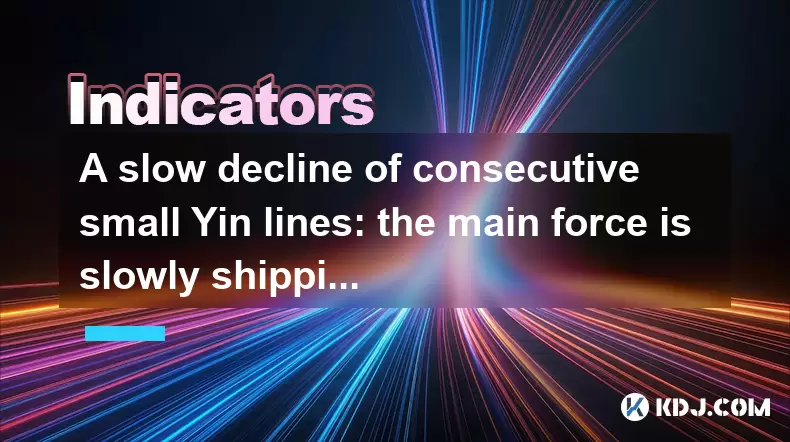
Introduction to the Concept of Consecutive Small Yin Lines
In the world of cryptocurrency trading, chart patterns and candlestick formations play a crucial role in understanding market trends and potential shifts in asset prices. One such pattern that traders often scrutinize is the occurrence of consecutive small Yin lines. These are a series of small bearish candlesticks that appear on a chart, signaling a gradual decline in price. The question that frequently arises among traders is whether this pattern indicates that the main force, or the major players in the market, are slowly shipping their holdings.
Understanding Consecutive Small Yin Lines
Consecutive small Yin lines are characterized by a series of small red or black candlesticks that appear one after the other on a price chart. Each candlestick represents a trading session where the closing price is lower than the opening price, but the overall decline in price is gradual and steady. This pattern suggests a slow and controlled decline in the asset's value, rather than a sharp drop.
The significance of this pattern lies in its potential to indicate a lack of strong selling pressure from the market's main force. If the main force were aggressively selling off their holdings, one would expect to see larger bearish candlesticks and a more significant drop in price. The presence of small Yin lines, therefore, suggests a more nuanced approach to selling.
The Role of the Main Force in Cryptocurrency Markets
In cryptocurrency markets, the term main force refers to large institutional investors, whales, or other significant market participants who have the power to influence market trends. These players often have access to substantial resources and can execute large trades that impact the overall market dynamics.
When the main force decides to sell off their holdings, it can lead to a significant drop in the asset's price. However, if the main force is slowly shipping their holdings, it suggests a strategic approach to selling, where they aim to minimize the impact on the market price. This could be done to avoid triggering a panic sell-off among retail investors.
Analyzing the Slow Decline of Consecutive Small Yin Lines
When analyzing a slow decline marked by consecutive small Yin lines, traders should consider several factors to determine if the main force is indeed slowly shipping their holdings. One key factor is the volume accompanying these small Yin lines. If the volume remains low during this period, it could indicate that the main force is indeed selling off their holdings gradually, without causing a significant impact on the market.
Another factor to consider is the overall market sentiment. If the broader market is experiencing a bearish trend, the presence of consecutive small Yin lines could simply reflect the general market sentiment rather than the actions of the main force. In such cases, it's essential to look at other indicators and market data to confirm whether the main force is actively involved in the selling.
Technical Indicators to Confirm the Main Force's Actions
To gain a clearer picture of whether the main force is slowly shipping their holdings, traders can use various technical indicators. One such indicator is the Moving Average Convergence Divergence (MACD). The MACD can help identify changes in momentum, which can be crucial in understanding whether the main force is actively selling.
- Check the MACD line and signal line: If the MACD line crosses below the signal line during the period of consecutive small Yin lines, it could indicate a bearish momentum, suggesting that the main force might be selling.
- Monitor the histogram: A negative histogram that continues to expand could further confirm the bearish trend and the possibility of the main force's involvement.
Another useful indicator is the Relative Strength Index (RSI). The RSI measures the speed and change of price movements and can help identify overbought or oversold conditions.
- Observe the RSI value: If the RSI value is gradually declining and approaches or enters the oversold territory (typically below 30), it could suggest that the main force is slowly selling off their holdings.
Case Study: Consecutive Small Yin Lines in Bitcoin
To illustrate the concept of consecutive small Yin lines and the potential actions of the main force, let's consider a hypothetical case study involving Bitcoin (BTC). Suppose a trader observes a series of small Yin lines on the Bitcoin chart over a period of several days, with each candlestick showing a slight decline in price.
Upon closer inspection, the trader notices that the trading volume during this period is relatively low, suggesting that the main force might be slowly shipping their holdings. To confirm this hypothesis, the trader examines the MACD and RSI indicators.
- MACD Analysis: The MACD line has crossed below the signal line, and the histogram is showing a gradual increase in negative values, indicating a bearish momentum.
- RSI Analysis: The RSI value is steadily declining and has entered the oversold territory, further supporting the idea that the main force might be slowly selling off their Bitcoin holdings.
Based on these observations, the trader concludes that the main force is likely involved in a strategic sell-off, using consecutive small Yin lines to minimize the impact on the market price.
Frequently Asked Questions
Q: How can traders differentiate between a slow decline caused by the main force and one caused by general market sentiment?
A: To differentiate between these scenarios, traders should analyze the trading volume and use technical indicators like the MACD and RSI. If the volume is low and the indicators show a gradual bearish trend, it might suggest the main force's involvement. Conversely, if the volume is high and the broader market is experiencing a bearish trend, it could be a reflection of general market sentiment.
Q: Can consecutive small Yin lines also indicate a period of consolidation rather than a sell-off by the main force?
A: Yes, consecutive small Yin lines can sometimes indicate a period of consolidation, where the market is taking a breather before resuming its previous trend. Traders can look for signs of consolidation, such as narrowing price ranges and decreasing volume, to differentiate it from a sell-off by the main force.
Q: What other chart patterns should traders be aware of when analyzing the actions of the main force?
A: Traders should also be aware of other patterns like the head and shoulders, double tops or bottoms, and bearish engulfing patterns. These patterns can provide additional insights into the main force's actions and help traders make more informed decisions.
Q: How can traders protect their investments during a period of consecutive small Yin lines?
A: To protect their investments, traders can consider setting stop-loss orders, diversifying their portfolio, and closely monitoring market indicators. It's also crucial to stay updated with news and developments that might impact the cryptocurrency market, as these can influence the actions of the main force.
Disclaimer:info@kdj.com
The information provided is not trading advice. kdj.com does not assume any responsibility for any investments made based on the information provided in this article. Cryptocurrencies are highly volatile and it is highly recommended that you invest with caution after thorough research!
If you believe that the content used on this website infringes your copyright, please contact us immediately (info@kdj.com) and we will delete it promptly.
- Pi Network Ecosystem Announcement to Coincide with Consensus 2025
- 2025-06-07 05:30:12
- Injective Protocol will conduct an AMA on X on May 13th, offering a detailed overview of the rapid expansion of iAssets
- 2025-06-07 05:30:12
- Bitcoin (BTC) Mining Just Got Easy: Introducing Bitcoin Solaris
- 2025-06-07 05:25:13
- Bitcoin (BTC) Realized Cap Beats Records, Eyes $900B as Market Lays Foundations for Breakout
- 2025-06-07 05:25:13
- Solana (SOL) Price Eyes $180 as Bullish Momentum Strengthens
- 2025-06-07 05:20:13
- TRUMP Price Prediction: By 10% to $13.29 as Bitcoin (BTC) Nears $100,000
- 2025-06-07 05:20:13
Related knowledge
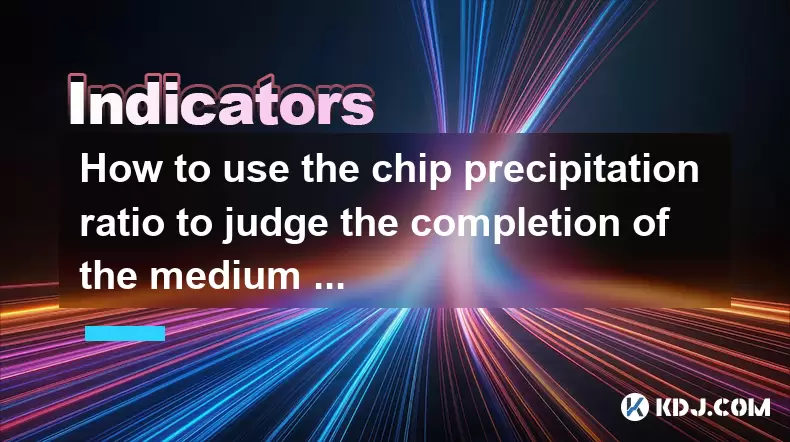
How to use the chip precipitation ratio to judge the completion of the medium and long-term bottom construction?
Jun 04,2025 at 03:36am
The chip precipitation ratio is a crucial metric used by investors to assess the accumulation of chips (or shares) at different price levels over time. This ratio helps in understanding the distribution of chips and can be a powerful tool for determining the completion of medium and long-term bottom construction in the cryptocurrency market. By analyzin...
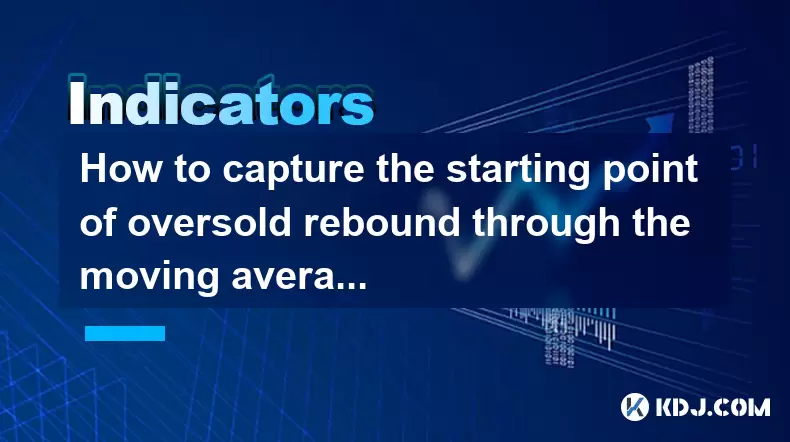
How to capture the starting point of oversold rebound through the moving average gravity reversal strategy?
Jun 04,2025 at 01:01pm
The moving average gravity reversal strategy is a sophisticated approach used by traders to identify potential entry points for buying cryptocurrencies when they are considered oversold. This strategy leverages the concept of moving averages to pinpoint moments when a cryptocurrency might be poised for a rebound. In this article, we will delve into the ...
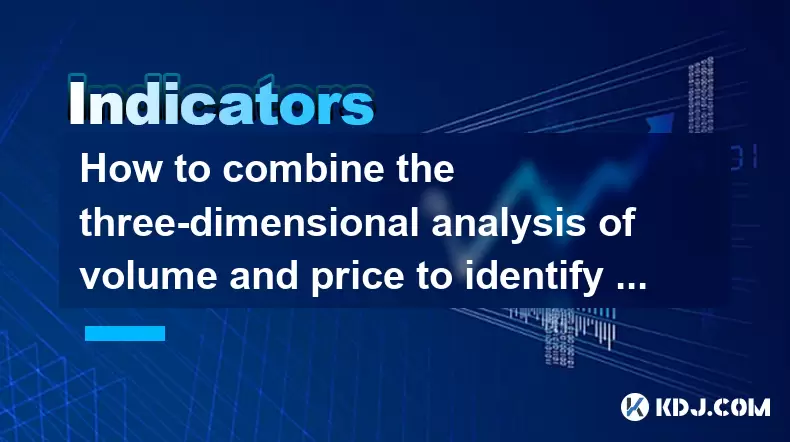
How to combine the three-dimensional analysis of volume and price to identify the golden buying point of breakthrough and retracement?
Jun 03,2025 at 11:42pm
In the dynamic world of cryptocurrencies, identifying the optimal buying points is crucial for maximizing profits and minimizing risks. One effective method to achieve this is by combining three-dimensional analysis of volume and price to pinpoint the golden buying points during breakouts and retracements. This article will delve into how to use this ap...
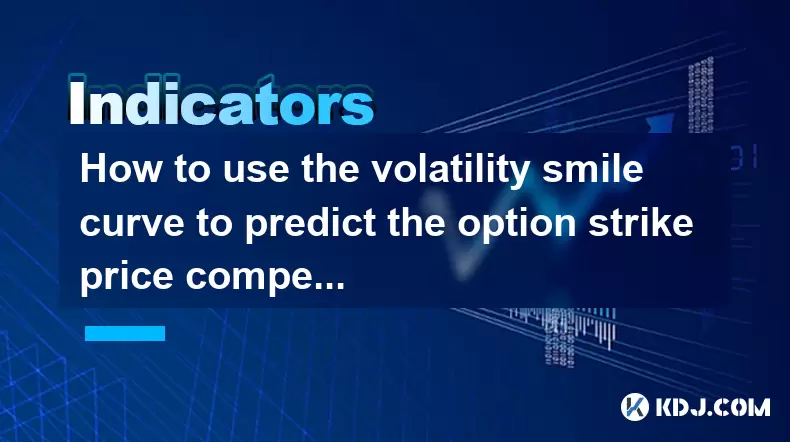
How to use the volatility smile curve to predict the option strike price competition area?
Jun 06,2025 at 01:01pm
The volatility smile curve is a graphical representation that shows the implied volatility of options across different strike prices for a given expiration date. It is called a 'smile' because the curve often takes the shape of a smile, with higher implied volatilities for options that are deep in-the-money or deep out-of-the-money, and lower implied vo...
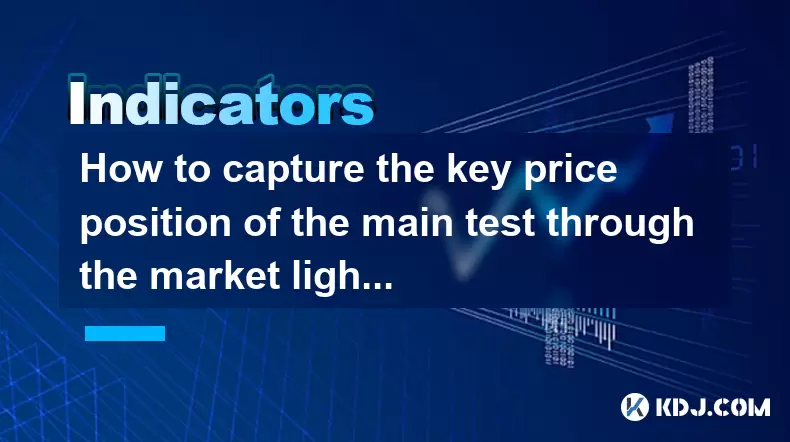
How to capture the key price position of the main test through the market lightning chart?
Jun 02,2025 at 06:07pm
Introduction to Market Lightning ChartThe market lightning chart is a powerful tool used by cryptocurrency traders to visualize price movements and identify key price positions. This chart type provides a detailed view of market activity, allowing traders to spot trends, reversals, and other significant price levels quickly. By understanding how to use ...
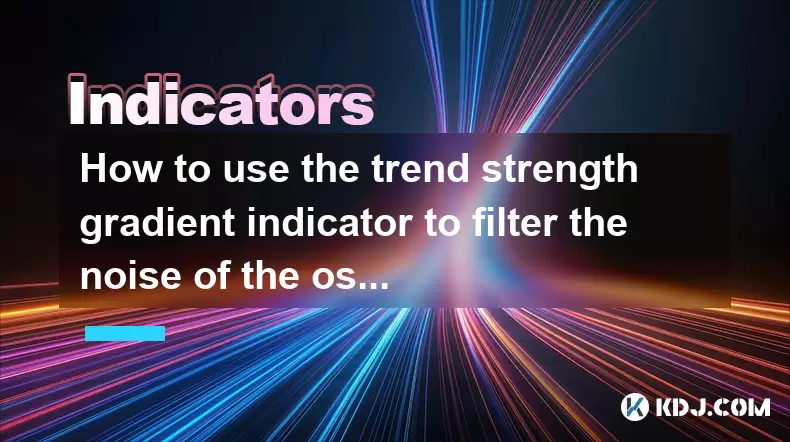
How to use the trend strength gradient indicator to filter the noise of the oscillating market?
Jun 06,2025 at 06:15pm
The trend strength gradient indicator is a powerful tool used by cryptocurrency traders to analyze market trends and filter out the noise that often accompanies oscillating markets. This indicator helps traders identify the strength of a trend, enabling them to make more informed decisions. In this article, we will explore how to effectively use the tre...

How to use the chip precipitation ratio to judge the completion of the medium and long-term bottom construction?
Jun 04,2025 at 03:36am
The chip precipitation ratio is a crucial metric used by investors to assess the accumulation of chips (or shares) at different price levels over time. This ratio helps in understanding the distribution of chips and can be a powerful tool for determining the completion of medium and long-term bottom construction in the cryptocurrency market. By analyzin...

How to capture the starting point of oversold rebound through the moving average gravity reversal strategy?
Jun 04,2025 at 01:01pm
The moving average gravity reversal strategy is a sophisticated approach used by traders to identify potential entry points for buying cryptocurrencies when they are considered oversold. This strategy leverages the concept of moving averages to pinpoint moments when a cryptocurrency might be poised for a rebound. In this article, we will delve into the ...

How to combine the three-dimensional analysis of volume and price to identify the golden buying point of breakthrough and retracement?
Jun 03,2025 at 11:42pm
In the dynamic world of cryptocurrencies, identifying the optimal buying points is crucial for maximizing profits and minimizing risks. One effective method to achieve this is by combining three-dimensional analysis of volume and price to pinpoint the golden buying points during breakouts and retracements. This article will delve into how to use this ap...

How to use the volatility smile curve to predict the option strike price competition area?
Jun 06,2025 at 01:01pm
The volatility smile curve is a graphical representation that shows the implied volatility of options across different strike prices for a given expiration date. It is called a 'smile' because the curve often takes the shape of a smile, with higher implied volatilities for options that are deep in-the-money or deep out-of-the-money, and lower implied vo...

How to capture the key price position of the main test through the market lightning chart?
Jun 02,2025 at 06:07pm
Introduction to Market Lightning ChartThe market lightning chart is a powerful tool used by cryptocurrency traders to visualize price movements and identify key price positions. This chart type provides a detailed view of market activity, allowing traders to spot trends, reversals, and other significant price levels quickly. By understanding how to use ...

How to use the trend strength gradient indicator to filter the noise of the oscillating market?
Jun 06,2025 at 06:15pm
The trend strength gradient indicator is a powerful tool used by cryptocurrency traders to analyze market trends and filter out the noise that often accompanies oscillating markets. This indicator helps traders identify the strength of a trend, enabling them to make more informed decisions. In this article, we will explore how to effectively use the tre...
See all articles

























































































